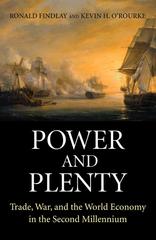Question
Q1. Investment Project Choice. Toby Amberville's Manhattan Cafe, Inc., is considering investment in two alternative capital budgeting projects. Project A is an investment of $75000
Q1. Investment Project Choice.Toby Amberville's Manhattan Cafe, Inc., is considering investment in two alternative capital budgeting projects. Project A is an investment of $75000 to replace working but obsolete refrigeration equipment. Project B is an investment of $150000 to expand dining room facilities. Relevant cash flow data for the two projects over their expected 2-year lives are as follows:
| Project A | |||
| Year 1 | Year 2 | ||
| Probability | Cash Flow ($) | Probability | Cash Flow ($) |
| 0.18 | 0 | 0.08 | 0 |
| 0.64 | 50,000 | 0.84 | 50,000 |
| 0.18 | 100,000 | 0.08 | 100,000 |
| Project B | |||
| Year 1 | Year 2 | ||
| Probability | Cash Flow ($) | Probability | Cash Flow ($) |
| 0.50 | 0 | 0.125 | 0 |
| 0.50 | 200,000 | 0.75 | 100,000 |
| 0.125 | 200,000 |
- Calculate the expected value, standard deviation, and coefficient of variation for cash flows from each project.
- Calculate the risk-adjusted NPV for each project using a 15 per cent cost of capital for the riskier project and a 12 per cent cost of capital for the less risky one. Which project is preferred using the NPV criterion?
- Calculate the PI for each project, and rank the projects according to the PI criterion.
- Calculate the IRR for each project, and rank the projects according to the IRR criterion.
- Compare your answers to parts B, C, and D, and discuss any differences.
Q2. Cash Flow Estimation.Cunningham'sDrugStore,amedium-sizedrugstorelocatedinMilwaukee,Wisconsin,isownedandoperatedbyRichardCunningham.Cunningham'ssellspharmaceuticals,cosmetics,toiletries,magazines,andvariousnovelties.Cunningham'smostrecentannualnetincomestatementisasfollows:
Salesrevenue | $1,800,000 |
| Totalcosts | |
Costofgoodssold | $1,260,000 |
Wagesandsalaries | 200,000 |
Rent | 120,000 |
Depreciation | 60,000 |
Utilities | 40,000 |
Miscellaneous | 30,000 |
Total Costs | 1,710,000 |
Netprofitbeforetax | $90,000 |
Cunningham'ssalesandexpenseshaveremainedrelativelyconstantoverthepastfewyearsandareexpectedtocontinueunchangedinthenearfuture.Toincreasesales,Cunninghamisconsideringusingsomefloorspaceforasmallsodafountain.Cunninghamwouldoperatethesodafountainforaninitialthree-yearperiodandthenwouldreevaluateitsprofitability.Thesodafountainwouldrequireanincrementalinvestmentof$20,000toleasefurniture,equipment,utensils,andsoon.Thisistheonlycapitalinvestmentrequiredduringthethree-yearperiod.Attheendofthattime,additionalcapital wouldberequiredto continueoperatingthe sodafountain, and nocapitalwouldberecoveredifitwereshutdown.Thesodafountainisexpectedtohaveannualsalesof$100,000andfoodandmaterialsexpensesof$20,000peryear.Thesodafountainisalsoexpectedtoincreasewageandsalaryexpensesby8%andutilityexpensesby5%.Becausethesodafountainwillreducethefloorspaceavailablefordisplayofothermerchandise,salesofotherfountainitemsareexpectedtodeclineby10%.
- Calculatenetincrementalcashflowsforthesodafountain.
- AssumethatCunninghamhasthecapitalnecessarytoinstallthesodafountainandthatheplacesa12%opportunitycostonthosefunds.Shouldthesodafountainbeinstalled?Whyorwhynot?
Q3. Cash Flow Analysis.Dunder-Mifflin,Inc.,isanalyzingthepotentialprofitabilityofthreeprintingjobsputupforbidbytheStateDepartmentofRevenue:
JobA | JobB | Job C | |
Projectedwinningbid(perunit) | $5.00 | $8.00 | $7.50 |
Directcostperunit | $2.00 | $4.30 | $3.00 |
Annualunitsalesvolume | 800,000 | 650,000 | 450,000 |
Annualdistributioncosts | $90,000 | $75,000 | $55,000 |
Investmentrequiredtoproduceannualvolume | $5,000,000 | $5,200,000 | $4,000,000 |
Assumethat:
(1)thecompany'smarginalcity-plus-state-plus-federaltaxrateis50%;
(2)eachjobisexpectedtohaveasix-yearlife;
(3)thefirmusesstraight-linedepreciation;
(4)theaveragecostofcapitalis14%;
(5)thejobshavethesameriskas thefirm'sotherbusiness;and
(6)thecompanyhasalreadyspent$60,000ondevelopingtheprecedingdata.This$60,000hasbeencapitalizedandwillbeamortizedoverthelifeoftheproject.
- Whatistheexpectednetcashfloweachyear?(Hint:Cashflowequalsnetprofitaftertaxesplusdepreciationandamortizationcharges.)
- Whatisthenetpresentvalueofeachproject?Onwhichproject,ifany,shouldthecompanybid?
- SupposethatDunder-Mifflin'sprimarybusinessisquitecyclical,improvinganddecliningwiththeeconomy,butthatjobAisexpectedtobecountercyclical.Mightthishaveanybearingonyourdecision?
Q4. A manager must determine which of two products to market. From market studies, the manager constructed the following payoff matrix of the present value of all future net profits under all the different possible states of the economy:
| Product 1 | ||
| State of the economy | Probability | Profit ($) |
| Boom | 0.2 | 50 |
| Normal | 0.5 | 20 |
| Recession | 0.3 | 0 |
| Product 2 | ||
| State of the economy | Probability | Profit ($) |
| Boom | 0.2 | 30 |
| Normal | 0.4 | 20 |
| Recession | 0.4 | 10 |
The manager's utility function for money is
U = 100M - M2
where U is the total utility of money (in utils) and M refers to the dollars of profit.
- Determine if this manager a risk seeker, risk neutral, or a risk averter.
- If the manager's objective was profit maximization regardless of risk, which product should the manager introduces?
- Evaluate the risk associated per dollar of profit with each product.
- If the manager's objectives were utility maximization, which product should the manager introduce? (Hint: in this section, you can assume the same probability distribution indicated in the table above.)
Step by Step Solution
There are 3 Steps involved in it
Step: 1

Get Instant Access to Expert-Tailored Solutions
See step-by-step solutions with expert insights and AI powered tools for academic success
Step: 2

Step: 3

Ace Your Homework with AI
Get the answers you need in no time with our AI-driven, step-by-step assistance
Get Started


